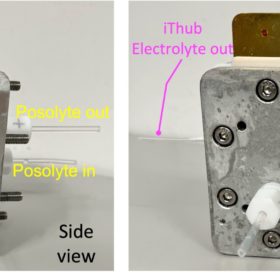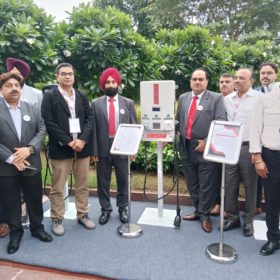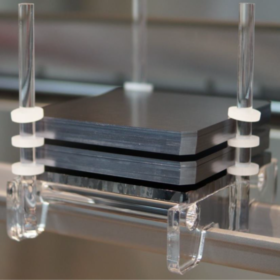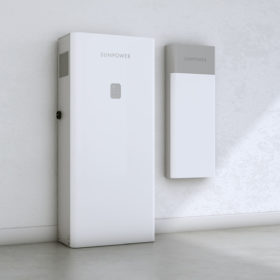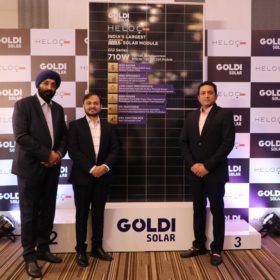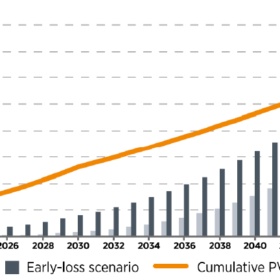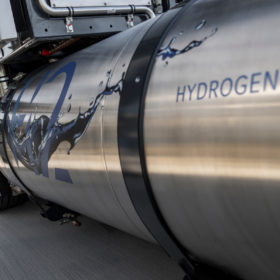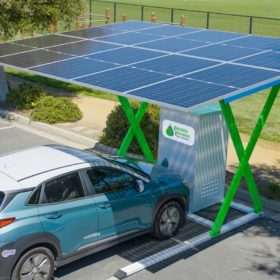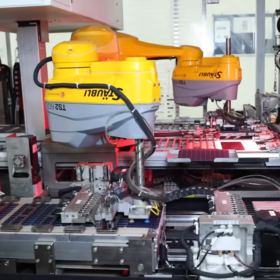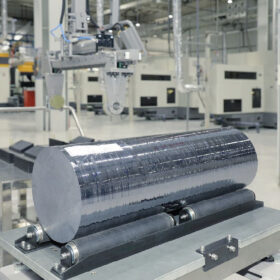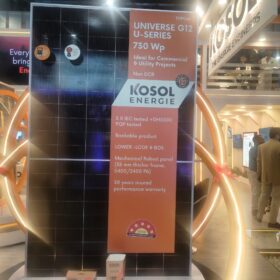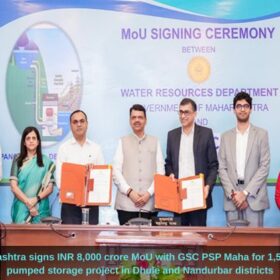Zinc-cerium redox flow battery for renewable energy storage
Scientists in Hong Kong have designed a redox flow battery with electrolytes made of zinc and cerium. They claim to have solved the incompatibility issue posed by these two elements. The device achieved a record average Coulombic efficiency of 94% during cycling.
Erisha E Mobility launches EVs and EV charging stations, eyes battery manufacturing
The electric vehicle (EV) manufacturer has launched electric cargo and passenger vehicles in the L5 category, along with EV charging stations. It also plans gigawatt-scale production of EV batteries soon.
Metastable Materials commissions chemical-free recycling unit for dead lithium batteries
The Indian startup has opened a lithium battery recycling unit in Bengaluru that deploys a chemical-free process for metal extraction. The facility has the capacity to process 1,500 tonnes of dead batteries per year.
New production process could double wafer throughput to up to 20,000 per hour
Scientists from Germany’s Fraunhofer ISE – together with a consortium of plant manufacturers, metrology companies, and research institutions – have developed a new production line concept for high-efficiency silicon cells, with a throughput of 15,000 to 20,000 wafers per hour – roughly double the usual amount.
Sunpower launches two new batteries for residential applications
The two batteries have a storage capacity of 13 and 19.5 kWh, respectively. Both lithium-ion systems use LiFePO4 as the cathode material and have a round-trip efficiency of over 86%.
Goldi Solar unveils 710 Wp HJT module, plans for massive expansion by 2025
The Indian manufacturer has unveiled a 710 Wp bifacial solar module based on the heterojunction (HJT) technology. It also announced plans to invest over INR 5,000 crore ($613 million) to expand its module capacity to 6 GW, build 5 GW of new cell manufacturing capacity, and start auxiliary production by 2025.
IEA PVSP predicts high-cost, low-revenue scenario for solar recycling
A recent report by the International Energy Agency Photovoltaic Power Systems Programme (IEA PVSP) reviews the current regulatory and industrial landscape for end-of-life PV management in Germany, France, Italy, Spain, Japan, South Korea, China, Australia, and the United States.
Hydrogen to play limited role in building energy supply
How much hydrogen is actually needed? Several German research institutes have examined 40 energy scenarios for hydrogen ramp-up and found that 15 million GWh of hydrogen will be needed worldwide by 2050.
US startup unveils 5 kW solar canopy for EV charging
Paired Power said its new 5 kW solar canopy measures 3.2 meters x 5.2 meters x 3.7 meters and can host up to 10 bifacial solar panels. It can be used in on-grid or off-grid modes and can be paired with lithium-ion battery storage systems up to 40 kWh in size.
Agrivoltaics for arable crops
French developer TSE has commissioned its first agrivoltaic pilot project in northeastern France. The 2.4 MW installation spans 3 hectares and is installed on arable land devoted to the cultivation of soya, wheat, rye, barley, and rapeseed.
